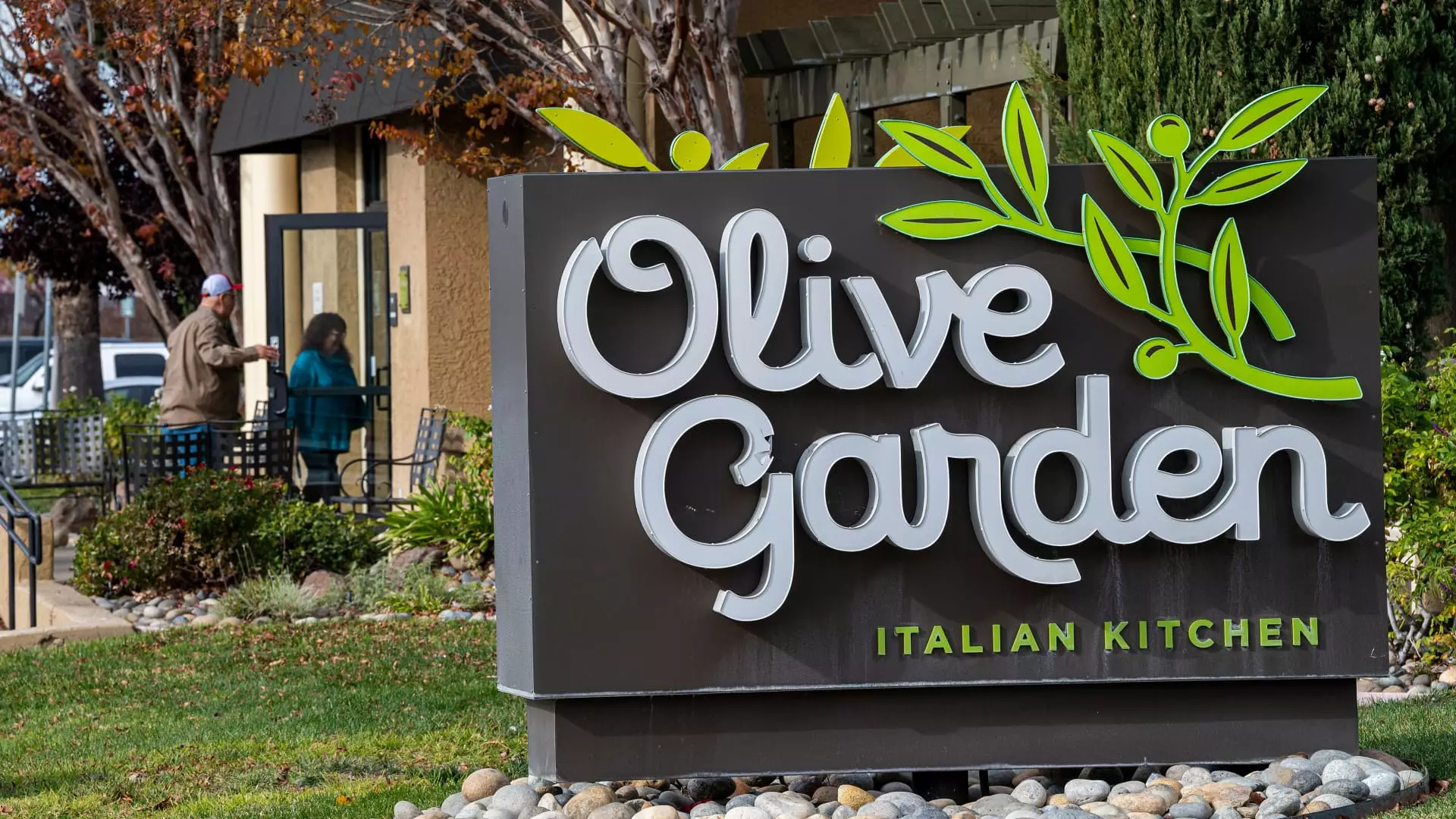Darden Restaurants has recently declared a notable victory over market expectations, with the company posting impressive earnings and revenue that easily outstripped Wall Street projections. Despite a backdrop of potential consumer spending pullbacks, Darden’s financial triumph is undeniable, showcasing both its robust business strategy and the enduring popularity of brands like Olive Garden and LongHorn Steakhouse. However, beneath the surface of these glowing results, critical observers must question the sustainability of such growth in an unpredictable economic climate.
The reported earnings per share of $2.98, slightly ahead of the $2.97 that analysts predicted, alongside revenues hitting $3.27 billion, which also eclipsed forecasts, undoubtedly contributed to a more than 2% jump in Darden’s stock during early trading. These numbers evolve into a paradox when we consider the broader implications—are we witnessing a temporary resurgence fueled by post-pandemic dining euphoria, or does Darden possess the necessary resilience to weather shifting consumer sentiments?
Growth Forecasts: Are They Too Optimistic?
Looking toward fiscal year 2026, Darden has projected revenue growth between 7% and 8%, which includes the impact of an extra week. The expected adjusted earnings per share range of $10.50 to $10.70 appears ambitious, especially considering the current socio-economic landscape where inflationary pressures may curb discretionary spending. The CEO, Rick Cardenas, expressed optimism regarding dining out, underscoring its position as a continued indulgence for consumers. Yet, one must approach such sentiments with caution; the reality of consumer behavior could diverge sharply from Cardenas’s claims as the cost of living continues to rise.
Darden’s financial outlook must be examined critically. Growth projections can often serve as a double-edged sword. They reflect confidence in corporate strategy and market conditions but can also indicate a disconnect from the very consumers driving sales. It remains to be seen if Darden can sustain its upward trajectory or if it is merely caught in a favorable moment, one that may soon fade as economic realities loom larger.
Same-Store Sales: A Tale of Two Brands
Darden’s flagship brands, Olive Garden and LongHorn Steakhouse, have recently posted robust same-store sales growth, indicating strong operational performance. Olive Garden, accounting for a notable portion of Darden’s revenue, reported a sensational 6.9% increase, surpassing expectations handily. LongHorn Steakhouse followed suit with a commendable 6.7% rise, ultimately showcasing the company’s ability to deliver appealing dining experiences.
However, one must not overlook the stark contrast within Darden’s broader portfolio. The fine dining segment, which includes renowned establishments like Ruth’s Chris Steak House, displayed a concerning decline of 3.3% in same-store sales, against anticipated minor downturns. This divergence raises alarm bells regarding Darden’s overall brand strength—while casual dining soars, high-end establishments are struggling. The appeal of upscale dining may not hold in an economy where consumers are increasingly scrutinizing their expenditures.
Strategic Moves: Share Repurchases and Delivery Innovations
In a bid to navigate these challenges, Darden announced an ambitious $1 billion share repurchase program, a significant signal of both confidence and strategic recalibration. Such a program could be seen as a way to bolster stock value amid a volatile market, but one must question whether this financial maneuver is a sign of forward-thinking or a reactive measure to floundering sales.
Additionally, Darden’s push into on-demand delivery with its Cheddar’s Scratch Kitchen brand reflects an attempt to diversify sales channels and cater to evolving consumer preferences. The pilot with Uber Direct showcases an awareness of market trends, yet one must remain skeptical—are these efforts enough to significantly pivot their trajectory? Or will they be viewed as a stopgap solution to more systemic issues facing the dining industry?
As Darden impacts its standing within the ever-changing restaurant landscape, the company’s future remains fraught with complexities. Will their forward momentum continue, or will it stall as macroeconomic pressures mount? The answers could reshape the entire dining landscape, making this an unfolding story to watch closely.

